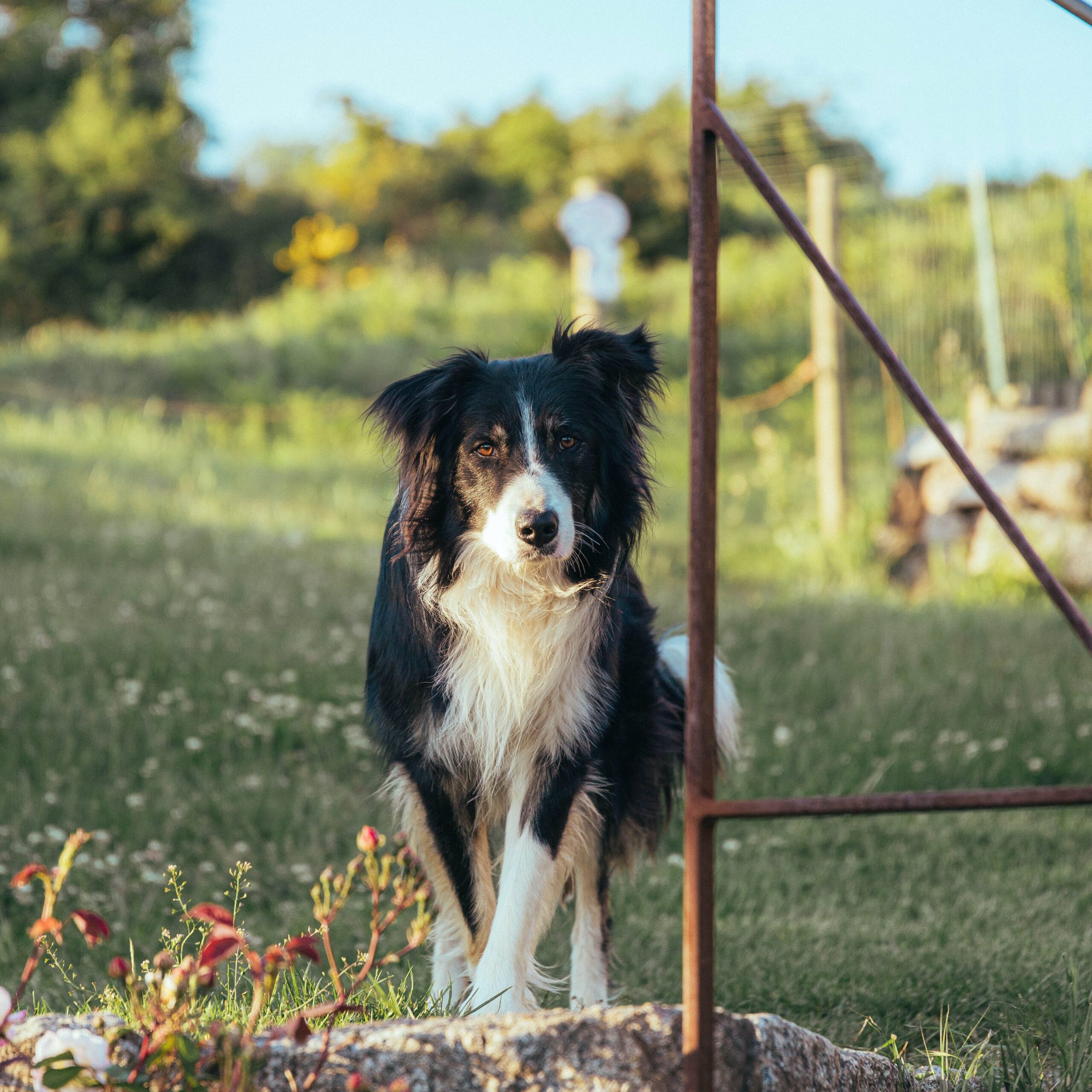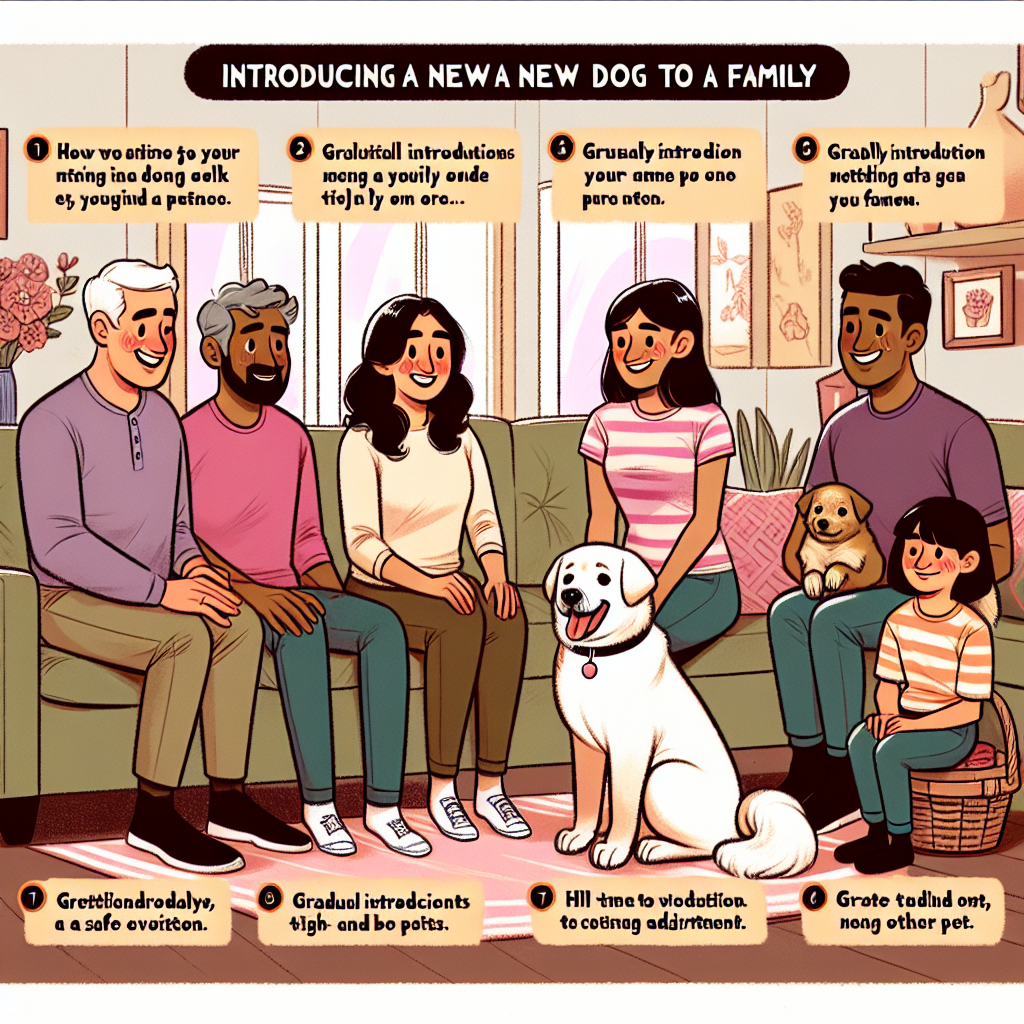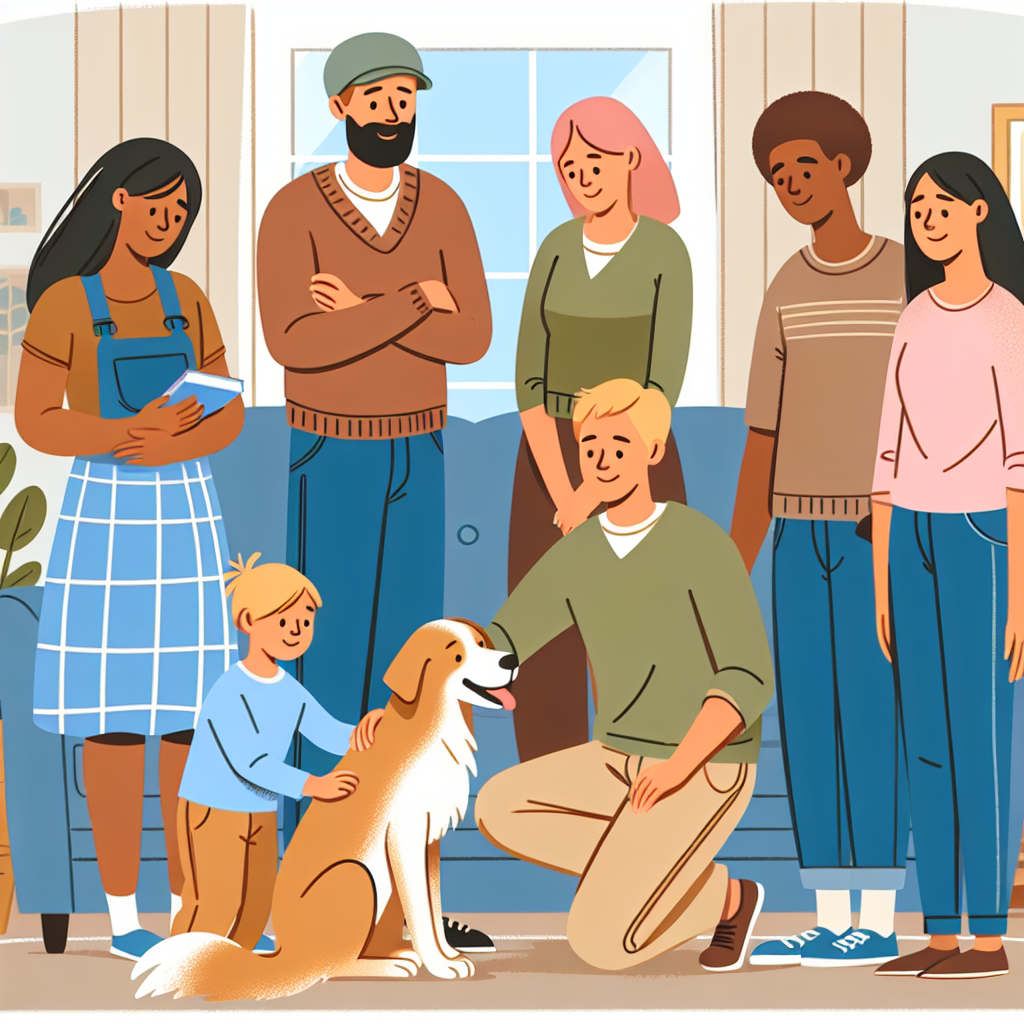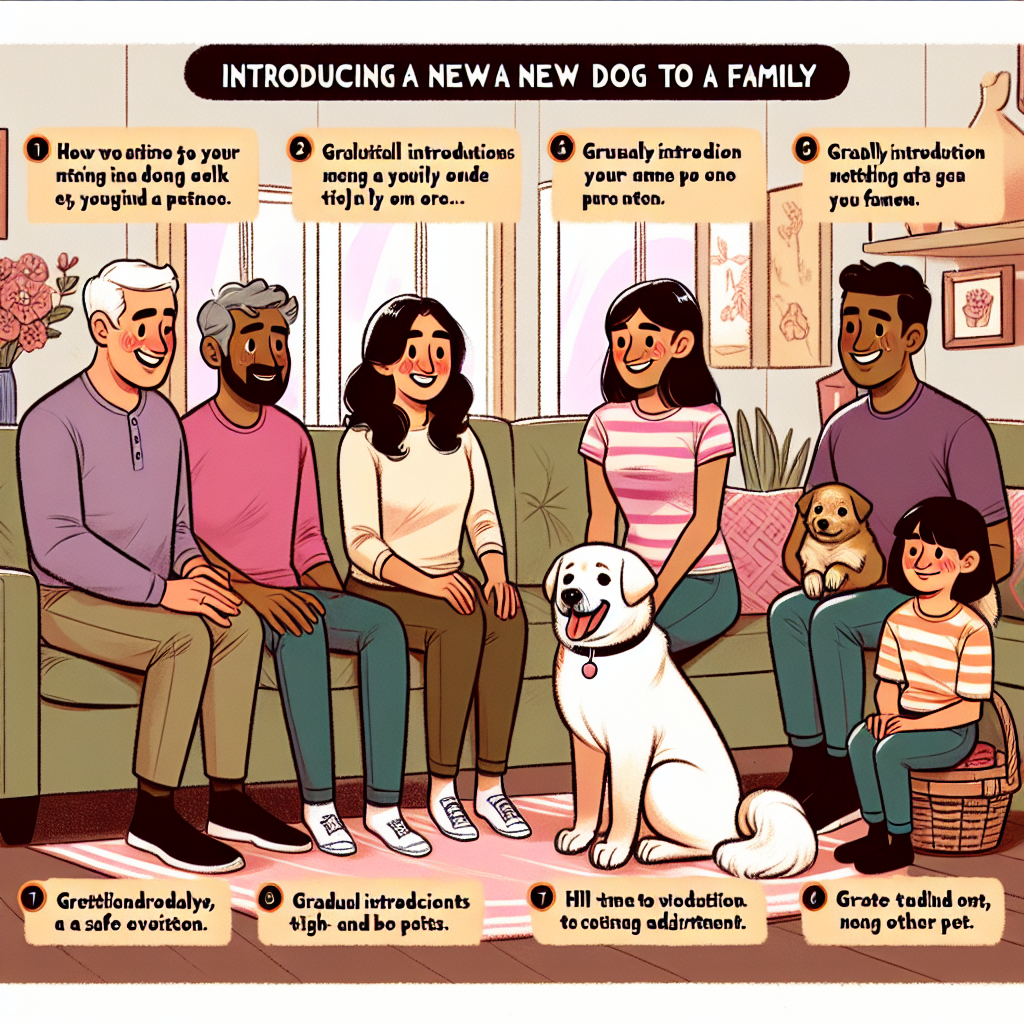So, you’re thinking about adding a new furry friend to your family, but you’re wondering how to ensure a smooth and successful introduction. Well, worry not! In this article, we’ll explore the best practices for introducing a new dog to your household. From creating a positive environment to managing expectations, we’ve got you covered. By following these helpful tips, you’ll pave the way for a harmonious and loving relationship between your new pup and the rest of the family.

Choose the Right Time
Introducing a new dog to your family is an exciting and rewarding experience, but it’s important to choose the right time to do so. Consider the dynamics of your family and whether everyone is ready for the commitment and responsibilities that come with owning a dog. Make sure that your family is in a stable place and that everyone understands the time and effort required to care for a new furry friend. Additionally, think about any major life events or changes happening in the near future, as these can affect the dog’s adjustment period. Choosing the right time will ensure a smoother transition for both your family and the new dog.
Consider the Dynamics of the Family
Before bringing a new dog home, it’s crucial to consider the dynamics of your family. Think about each family member’s lifestyle, schedule, and expectations for owning a dog. Are there young children in the house? Do any family members have allergies or aversions to dogs? Understanding the needs and preferences of everyone in the household will help you choose a dog that fits well with your family’s overall lifestyle. Additionally, consider whether everyone is on board with the decision to bring a new dog into the family and if they are willing to participate in the responsibilities that come with it.
Assess the Current Pets
If you already have pets, it’s essential to assess their compatibility with a new dog. Consider their personality traits, energy levels, and any history of aggression towards other animals. Some dogs may do well with a new companion, while others may prefer to be the sole focus of attention. If you’re unsure about your current pet’s reaction to a new dog, it may be helpful to consult with a professional trainer or behaviorist who can provide guidance based on their expertise. Ensuring a harmonious relationship between your existing pets and the new dog is crucial for a positive and successful introduction.
Prepare Your Home
Creating a safe and welcoming environment for your new dog is essential for a smooth transition. Before bringing them home, take the time to prepare your home to make it a comfortable and secure space for your new furry friend.
Create a Safe Space
Set up a designated area in your home where your new dog can retreat to if they need some alone time or feel overwhelmed. This space should be quiet, cozy, and equipped with comfortable bedding and toys. Consider using a crate or a gated-off area to define this safe space, as it can provide a sense of security for your dog during the initial adjustment period.
Remove Hazards
Take a walk around your home and remove any potential hazards that could be harmful to your new dog. These may include household chemicals, toxic plants, loose cords, or small objects that can be chewed on or swallowed. Childproofing your home can also help prevent accidents or unwanted behaviors. Ensuring a safe environment will not only protect your new dog but also give you peace of mind knowing that they are in a secure space.
Scent Exchange
Before the new dog’s arrival, consider engaging in scent exchange between your current pets and the newcomer. This can be done by rubbing a blanket or toy on each animal and then exchanging these items. This scent exchange helps familiarize the pets with each other’s scent, making the introduction process less stressful. As dogs rely heavily on their sense of smell, this simple step can go a long way in facilitating a positive introduction and subsequent interactions.
Establish House Rules
Setting clear house rules and expectations from the beginning will help your new dog understand their role in the family and establish routine and structure.
Decide on Feeding and Potty Schedules
Establishing a feeding and potty schedule for your new dog is crucial for their well-being and successful integration into your family routine. Decide on specific meal times and stick to them consistently. Additionally, establish a routine for potty breaks and designate an appropriate area for your dog to relieve themselves. Consistency in these areas will not only help your new dog feel secure but also make training easier and prevent accidents in the house.
Determine Sleeping Arrangements
Deciding on where your new dog will sleep is an important part of establishing house rules. Consider whether you want your dog to sleep in a crate, a designated bed, or in your bed. Keep in mind that dogs are den animals and may feel more comfortable and secure in a crate. However, if you choose to allow them on your bed, ensure they understand and respect your boundaries. Clear guidelines around sleeping arrangements will contribute to a peaceful and comfortable night’s sleep for both you and your new dog.
Set Boundaries and Training Policies
Establishing boundaries and training policies early on will help your new dog learn appropriate behaviors and understand what is expected of them. Decide on basic rules such as no jumping on furniture, no begging at the table, or no biting. Consistency in enforcing these boundaries is key to preventing confusion and ensuring a well-behaved dog. Positive reinforcement training methods are highly recommended and can be used to reward good behavior and discourage unwanted behaviors. Remember to be patient and consistent in your training efforts, as it takes time for a new dog to adjust and learn the rules of their new home.
Introduce the New Dog Gradually
Introducing your new dog to your existing pets requires careful planning and a gradual approach. Rushing the process can lead to stress, anxiety, and potential conflicts between the animals. Take your time and follow these steps to ensure a smooth and successful introduction.
Initial Introduction
When bringing your new dog home, introduce them to their designated safe space without the presence of your other pets. Allow them to explore and become familiar with their surroundings. This will help them feel more comfortable and reduce their stress levels. Once your new dog has settled in, you can begin the introductions to your other pets.
Supervised Interactions
When it’s time for the initial introduction between your new dog and your existing pets, do so in a controlled and supervised manner. Keep all pets on leashes and maintain a calm and relaxed environment. Allow them to sniff and investigate each other from a distance. Observe their body language closely for any signs of aggression or anxiety. If all goes well, you can gradually allow them to interact more closely, always watching for any signs of tension or discomfort. Be patient and remember that each animal may adjust at their own pace.
Gradual Integration
Over time, gradually increase the amount of time your new dog spends with your existing pets. Allow them to interact in a supervised setting, but maintain control and intervene if necessary. It’s important to provide each animal with their own space and individual attention to prevent any feelings of jealousy or competition. As the new dog becomes more comfortable and familiar with their new pack, you can start reducing the amount of supervision and allow them to interact freely. Be prepared for some minor conflicts or disagreements during the adjustment period, as this is a normal part of establishing a hierarchy within the pack.

Manage the Meeting Location
Choosing the right meeting location for the initial introduction between your new dog and your existing pets is essential for a successful integration. By considering certain factors, you can create a neutral and controlled environment that minimizes potential distractions or territorial behaviors.
Neutral Territory
Selecting a neutral territory for the initial meeting can help reduce territorial behavior and decrease the chances of conflict between the pets. Choose a location outside of your home, such as a park or a neutral neighbor’s yard. This neutral ground ensures that no one pet feels their territory is being invaded, creating a more balanced and stress-free environment for the introduction.
Controlled Environment
Ensure that the meeting location provides a controlled environment where you have maximum control over the situation. This may include using leashes or gates to separate the animals if needed. Having control over the environment and the ability to intervene quickly will help you prevent any potential conflicts and keep everyone safe during the introduction.
Limit Distractions
To set the stage for a successful introduction, limit any unnecessary distractions that could hinder the animals’ ability to focus on each other. Avoid introducing them in busy or noisy locations, as this can increase stress levels and make it more difficult for the pets to communicate effectively. By minimizing distractions, you create an environment where the animals can concentrate on getting to know each other without added stress or anxiety.
Use Positive Reinforcement
Positive reinforcement is a highly effective training method that rewards desired behaviors and helps strengthen the bond between you and your new dog. By using positive reinforcement techniques during the introduction and throughout their time together, you can create a positive and rewarding experience for both your new dog and your existing pets.
Reward Good Behavior
Whenever your new dog and existing pets display positive behavior during their interactions, be sure to reward them. This can include giving them treats, praise, or affection. Positive reinforcement helps create positive associations between the animals and encourages them to continue exhibiting desirable behaviors. By rewarding good behavior, you foster a harmonious and friendly relationship between your pets and increase the likelihood of successful integration.
Provide Treats and Affection
Offering treats and affection to both your new dog and your existing pets during the introduction process helps create a positive and welcoming atmosphere. By providing treats, you can distract them from any initial nervousness or tension and redirect their focus on positive experiences. Similarly, offering affection and praise helps reassure all animals that they are valued members of the family and that their interactions are encouraged and appreciated.
Use Clicker Training
Clicker training is a form of positive reinforcement that uses a clicking sound to signal to your dog that they have performed a desired behavior correctly. By incorporating clicker training during the introduction process, you can communicate with your new dog and existing pets more effectively. Click and treat when they display positive interactions or behaviors, reinforcing the idea that friendly interactions between them are rewarded. Clicker training serves as a valuable tool for teaching them how to interact appropriately and adds structure to their initial interactions.

Monitor Body Language
Observing the body language of your new dog and existing pets during the introduction and subsequent interactions is crucial for understanding their emotions and ensuring their well-being. Pay attention to vocalizations, tail and ear positions, and any signs of anxiety or tension.
Pay Attention to Vocalizations
Dogs often communicate using vocalizations, and understanding their different vocal cues is important for gauging their comfort levels and emotional states. Listen for any growls, barks, or whines, as these can indicate stress, fear, or aggression. Positive vocalizations such as soft whining or playful barking can indicate that the animals are comfortable with each other. By paying attention to their vocalizations, you can intervene or adjust the interaction accordingly to keep everyone safe and ensure a positive experience.
Observe Tail and Ear Positions
The positions of a dog’s tail and ears can provide valuable insights into their emotional state. A relaxed, wagging tail and ears positioned neutral or forward indicate that the animals are comfortable and at ease. On the other hand, a tucked tail, stiff wagging, or raised ears can signify fear, anxiety, or aggression. By observing the positions of their tails and ears, you can anticipate any potential issues and adjust the interaction as needed.
Look for Signs of Anxiety or Tension
Anxiety or tension can manifest differently in different dogs, so it’s important to be observant and knowledgeable about the common signs. These signs may include excessive panting, pacing, drooling, freezing, or avoidance behaviors. Look for any signs of stress or discomfort in your new dog or existing pets during the introduction or subsequent interactions. If you notice any concerning behaviors, it may be necessary to intervene and modify the interaction or seek professional guidance to address the underlying causes of anxiety or tension.
Address Aggression or Conflict
In some cases, despite your best efforts, aggression or conflicts may arise during the introduction or subsequent interactions. It’s important to address these situations promptly and appropriately to ensure the safety and well-being of all animals involved.
Consult a Professional Trainer or Behaviorist
If you encounter aggression or conflicts that you are unsure how to handle, it’s highly recommended to seek the expertise of a professional trainer or behaviorist. These professionals can assess the situation and provide guidance on how to manage and address the aggression or conflicts effectively. They can offer insights into the dynamics between your pets and provide specialized training or behavior modification techniques that may be necessary to resolve the issues.
Implement Proper Counterconditioning
Counterconditioning is a technique that helps dogs develop positive associations with certain triggers or situations. If aggression or conflicts arise during the introduction process, implementing counterconditioning techniques can help change the dogs’ emotional response to each other. This may involve using treats, praise, or calm redirection to create positive interactions and build trust between the animals. Counterconditioning should be led by a professional or someone experienced in working with aggressive or reactive dogs to ensure the safety of all involved.
Consider Temporary Separation
If aggression or conflicts persist despite your efforts, it may be necessary to consider temporary separation between the animals. This can include using physical barriers such as gates or crates to ensure their safety and prevent any potential harm. Temporary separation allows you to address the issues with professional guidance and reintroduce the animals gradually once the conflicts have been resolved. While separation may be difficult, it’s crucial for the welfare and safety of all animals involved.

Allow Adjustments in the Pack
Bringing a new dog into the family requires adjustments within the existing pack dynamic. Allowing these adjustments to take place naturally will help establish a hierarchy and promote positive interactions between your pets.
Establish a Hierarchy
Dogs are pack animals and naturally seek a hierarchical structure within the group. When introducing a new dog, it’s important to allow them to establish their place within the pack without interference. This may involve minor conflicts or displays of dominance as the dogs establish their roles. As long as the interactions do not become aggressive or dangerous, it’s best to let them work out their differences and establish their hierarchy on their own.
Give Each Dog Individual Attention
To prevent feelings of jealousy or competition, ensure that each dog in your pack receives individual attention and quality time with you. This helps prevent any potential resource guarding behavior and reinforces positive social interactions. By giving each dog their own individual attention, you communicate to them that they are valued members of the family and that their presence is cherished.
Promote and Encourage Positive Interactions
As your new dog and existing pets continue to adjust and interact, it’s crucial to promote and encourage positive interactions between them. Provide opportunities for play, exercise, and socialization in a controlled and supervised environment. Encourage them to engage in cooperative behaviors such as shared meal times or playing with the same toys. By emphasizing positive interactions and rewarding cooperative behaviors, you facilitate the development of a strong bond and improve the overall dynamic within the pack.
Ensure a Smooth Transition
To ensure a smooth transition for your new dog and your family, there are several key factors to consider and implement during their adjustment period.
Provide Proper Exercise and Mental Stimulation
Regular exercise and mental stimulation are essential for a dog’s well-being and behavior. Ensure that your new dog receives the appropriate amount of exercise based on their breed, age, and energy level. Mental stimulation, such as puzzle toys or training sessions, helps prevent boredom and destructive behaviors. By providing proper exercise and mental stimulation, you set your new dog up for success and allow them to expel energy in a positive way.
Maintain Consistency in Daily Routine
Dogs thrive on routine, and establishing a consistent daily routine is vital for their adjustment and overall behavior. This includes consistent feeding times, potty breaks, exercise, and training sessions. Stick to the schedule you’ve established during the introduction period to provide a sense of stability and predictability for your new dog. Consistency allows them to anticipate what’s coming next, reducing stress and anxiety.
Monitor and Address any Issues
Even after the initial introduction and adjustment period, it’s important to continue monitoring your new dog’s behavior and address any issues that may arise. Keep an eye out for signs of anxiety, aggression, or unwanted behaviors, and address them promptly. Seek professional help if necessary, as early intervention can prevent the development of more significant behavior problems. By being proactive and attentive to your new dog’s needs, you can ensure a smooth and successful transition into their new forever home.





